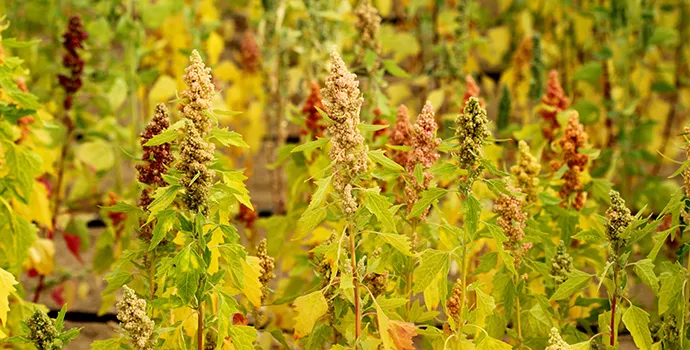World Food Day: quinoa and hope of food security in marginal environments
16 October 2016
World Food Day, which is celebrated on October 16 as the founding date of the United Nations Food and Agriculture Organization (FAO), is a global movement to end hunger. Food insecurity, which an estimated 795 million people worldwide experience, poses a risk to health, life potential, and even regional stability. In addition to a celebration, World Food Day also provides a platform for discussion around the causes and solutions of food insecurity. One such contributing factor includes the strains placed on agriculture by a combination of changing weather patterns, growing populations, and increased urbanization. The growing concern over climate change makes the 2016 theme for World Food Day, “Climate is changing. Food and agriculture must too,” especially timely.
The Middle East and North Africa (MENA) region has been particularly affected by these issues. The region has experienced an especially high population growth and rate of urbanization, with about half of the region’s population living in cities. Farming in the region faces constraints from changing demographics as well as lack of arable land, limited rainfall, high temperatures, and soil salinity, all of which will be exacerbated by climate change. According to the United Nations Intergovernmental Panel on Climate Change (IPCC), the MENA region is expected to become hotter and drier. By 2025, an estimated 80 million to 100 million people will be exposed to water stress, a condition where water demand exceeds its availability.
One solution to these growing problems faced by the MENA region could be found in quinoa, a small grain-like crop. Globally, the food is having something of a moment. Worldwide, the production of quinoa has risen steadily. In 2014 over 192,000 tonnes of the grain were produced. While the United States is the main importer of the crop, other developed countries have also taken notice of the food, including Canada and France, the second and third highest importers of the crop respectively. The grain was even given its own year when 2013 was declared the International Year of Quinoa by the FAO.
The health benefits of the food have made it a staple for hip restaurants and upscale grocery boutiques around the world. Labeled a superfood, quinoa is high in protein, fiber, and contains lysine, an essential amino acid for tissue growth and repair. For these reasons, and for quinoa’s highly adaptable nature, it is also gaining the attention of the agricultural development community. Quinoa can thrive in a variety of temperatures, altitudes, and moisture levels, making it especially ideal for arid regions of the world. For these regions, learning to cultivate and rely on new varieties of grains, outside of major cereal crops such as wheat, rice, barley, and corn, is growing increasingly important in light of climate change and food insecurity.
Quinoa cultivation is not, however, without its challenges. The ancient crop, which originated in the Andean region of South America and is believed to have been domesticated between 3,000 and 4,000 years ago, has not been widely cultivated outside of its indigenous environment. Not only is there limited knowledge of how to cultivate and manage the crop outside of the Andes, there is a lack in awareness of the grain’s nutritional benefits and channels for farmers to sell the product.
Dr. Nanduri K. Rao, a plant genetic resources scientist, explains that there are challenges ahead for the widespread adoption of quinoa, saying “we still have to overcome the constraints and issues for its successful introduction and scaling-up in the new and non-traditional growing environments.”
Researchers, however, are working to both cultivate the crop and make it a viable food option for people in the MENA and other regions. Since 2007, the International Center for Biosaline Agriculture (ICBA), in collaboration with other research and donor organizations, and governments, has led a global quinoa program, carrying out research activities in the MENA and Central Asian regions. Along with its partners, ICBA has worked to identify high-yielding varieties that are both salt- and heat-tolerant, with four already ready for adoption and cultivation. ICBA is also working to create dialogue around the issues associated with the widespread cultivation of the crop.
As part of this effort to raise more awareness, ICBA is organizing an international conference titled “Quinoa for Future Food and Nutrition Security in Marginal Environments” in collaboration with the Ministry of Climate Change and Environment of the United Arab Emirates, FAO, Zayed University, the Islamic Development Bank and the Arab Bank for Economic Development in Africa. The conference, scheduled for December 6-8, 2016, in Dubai, UAE, seeks to provide a platform that will allow discussion around the crop’s potential for sustainable agricultural production in marginal environments.
It is hoped that the conference will give a renewed impetus to quinoa research and development and contribute to finding better solutions to food insecurity and other challenges facing marginal environments around the world.











